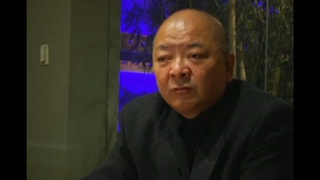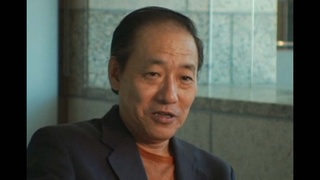Interviews
Help from fellow Japanese (Spanish)
(Spanish) I left the house and saw in the distance an old man with a stick larger than a cane, walking slowly and I said, “This guy looks like my dad.” I approached him slowly and saw that it was indeed my father! When I recognized him I said: “Papá, what are you doing here?” He was sick, real sick. He said: “Venancio, please bring me some water to drink.” I ran to the house but said nothing to my mother. I filled up a glass with water and then ran to give it to him. He drank the water, and then I accompanied him to the house.
He arrived at the house, [and] immediately I [began to write]…at that time I knew how to write in nihongo (Japanese). I wrote in nihongo to Mr. Tsukeo Isayama, who was the head of the Japanese community in San Nicolás. This letter left my hands and passed into the hands of every family in San Nicolás, each of which commented on what I had written. I was nine years old at the time.
On the third day, two empty trucks arrived [without goods inside], and those [folks] inside [were] dressed in black because they thought my father had died. One of them wore a tie, Isayama ojisan with a tie. “Is he alive?” “Yes, but in critical condition,” I told him. “Ah, yokatta ne?” “Great news, no?” he asked. Then we were going to see what to do next. We began to carry the things [from the trucks], first the things and then they placed him on a mattress, a sheet, placing his body on it, they covered him up very nicely, and afterwards the things behind him, and on the other truck the things that remained in the house.
A whole bunch of stuff remained inside the house, and then we left Llamachupán. We arrived at San Nicolás; everything had been arranged. The Japanese were very much united, they came to see Shinki, we are going to unload the trucks and place his things in this house. They gave us a small house on the San Nicolás Hacienda, we were so comfortable in that house, and there my father lived only for a while…
Date: September 6, 2007
Location: Lima, Peru
Interviewer: Harumi Nako
Contributed by: Asociación Peruano Japonesa (APJ)
Explore More Videos

Japanese-Peruvian Cuisine (Japanese)
(b. 1962) Japanese restaurant owner and chef in Peru

Delivering Dinner for Former President Fujimori (Japanese)
(b. 1962) Japanese restaurant owner and chef in Peru

Inspirations for Living Abroad (Japanese)
(b. 1962) Japanese restaurant owner and chef in Peru

Returning to Japan on a prisoner-of-war exchange boat (Japanese)
(b. 1948) Executive Director of Amano Museum

Memories of the ship heading to the U.S.
(b. 1938) Japanese Peruvian incarcerated in Crystal City


Celebrating his birthday on December 7, 1941
(1914–2015) Nisei YMCA and Japanese American community leader

Starting a YMCA program in camp
(1914–2015) Nisei YMCA and Japanese American community leader

Great grandfather Asato was a sumo wrestler
Okinawan American whose parents are from Peru.

Grandfather loved to tell her stories of her great-grandfather Arakaki
Okinawan American whose parents are from Peru.

Prosecution of Japanese Peruvians during the war
Okinawan American whose parents are from Peru.

Parents leaving Peru to move to California
Okinawan American whose parents are from Peru.

Having nowhere to go postwar
(b. 1938) Japanese Peruvian incarcerated in Crystal City

Winners and losers
Professor of Law, University of Sao Paulo, Lawyer, Translator (b. 1948)

